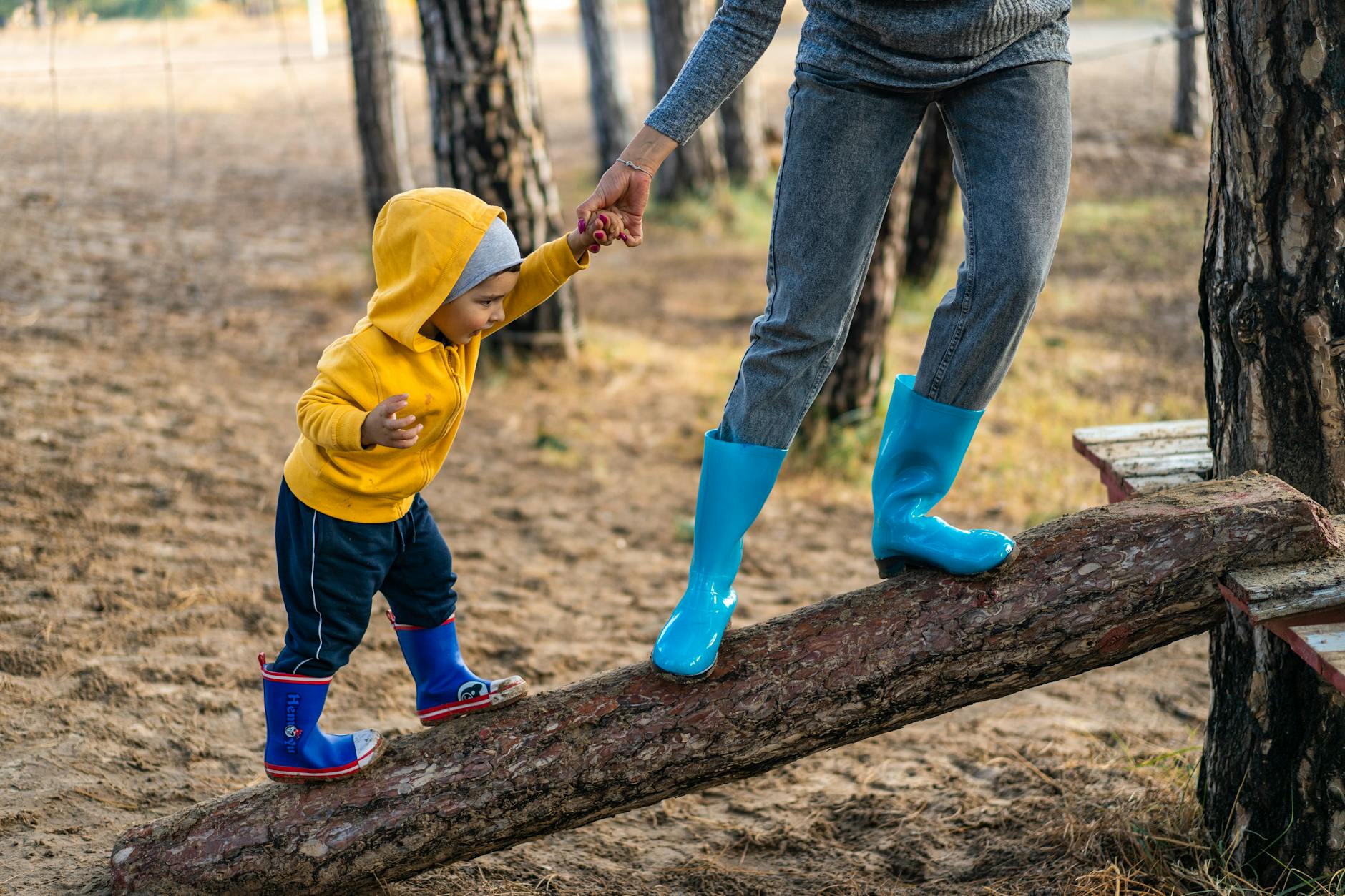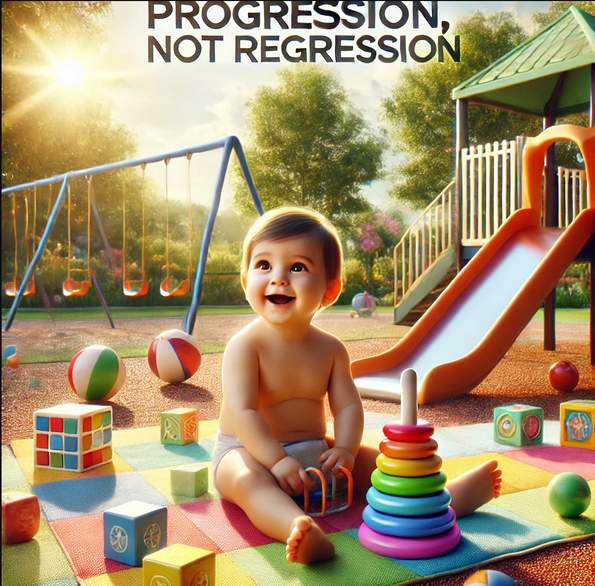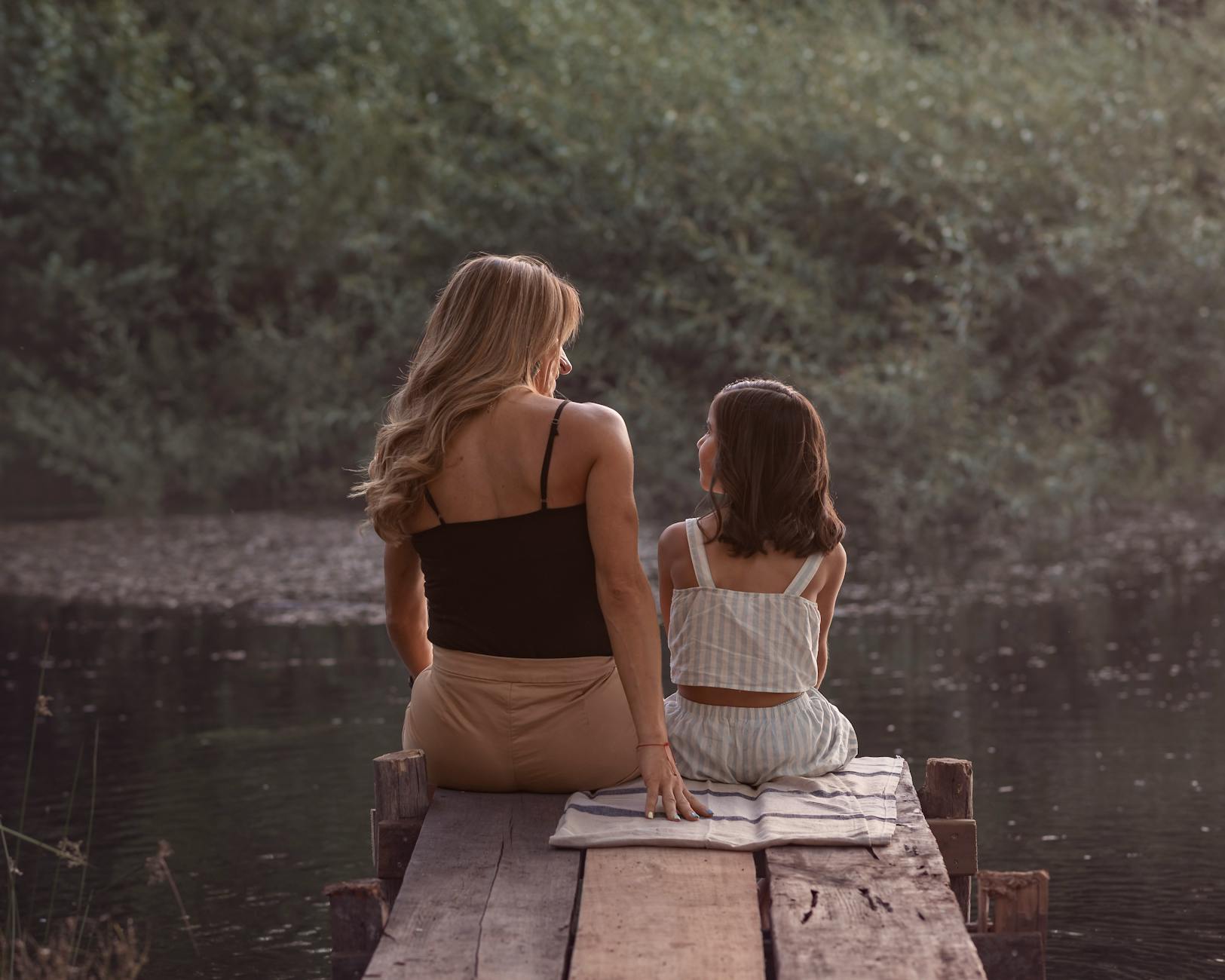The Importance of Barefoot Shoes and Barefoot Time for Toddler Development
When it comes to supporting our little ones’ development, we often focus on nutrition, sleep, and play opportunities. However, one crucial aspect that frequently gets overlooked is foot development and the profound impact footwear choices have on a toddler’s overall physical development. Research increasingly suggests that keeping toddlers barefoot as much as possible—and using minimalist “barefoot shoes” when protection is needed—offers significant developmental advantages. This blog post explores the evidence behind why barefoot is best for our youngest walkers.
The Natural Development of Toddlers’ Feet
A child’s foot at the first walker stage consists primarily of cartilage and padding tissues rather than fully formed bones. The bones, ligaments, and tendons develop through active use of the foot. Unlike adult feet, a baby’s foot is characteristically wide at the toes and narrow at the heel—a natural shape that conventional footwear often fails to accommodate.
Most toddlers appear flat-footed when they first start walking because the bones, muscles, and ligaments of their feet are still developing. This natural process requires freedom of movement to progress optimally. According to research, children who habitually walk barefoot have been observed to have better plantar arch development compared to their peers who regularly wear shoes. Studies further suggest that habitual shoe-wearing at an early age may predispose children to flat feet.
The Scientific Benefits of Going Barefoot
Sensory Development and Proprioception
Our feet contain approximately 200,000 nerve endings that transmit crucial information to our brains about the ground beneath us. This sensory process, called proprioception, is fundamental to a child’s development of body awareness in relation to their surroundings.
When toddlers walk barefoot, these nerve endings are fully engaged, providing rich sensory input that helps develop better balance and coordination. This “earthing” process enables children to physically connect with their environment, experiencing various textures and surfaces that stimulate both cognitive and physical development.
Motor Skills Enhancement
Research has demonstrated significant differences in motor performance between habitually barefoot and shoe-wearing children. A comprehensive study found that barefoot children aged 6-10 years scored higher in balance tests and standing long jumps compared to their shoe-wearing counterparts. The study concluded that “regular barefoot activities during childhood seem to be beneficial for the development of balance and jumping skills”.
Another study revealed that children who spend most of their time barefoot demonstrate increased motor skills, particularly in jumping and balancing. This enhanced performance is attributed to the direct sensory feedback received through barefoot contact with the ground.
Muscle and Bone Development
Going barefoot activates and strengthens the muscles, ligaments, and nerves in a child’s feet. Without the restrictive support of conventional shoes, toddlers naturally develop stronger foot muscles as they learn to walk, balance, and navigate different surfaces.
Research indicates that children who habitually walk barefooted not only have better plantar arch development but also demonstrate differences in foot anthropometry, particularly in forefoot width. The anterior part of the foot tends to be wider in barefoot walkers, allowing for better stability and more natural movement patterns.
When Protection is Necessary: The Role of Barefoot Shoes
While barefoot is ideal for optimum development, practical considerations often necessitate some form of foot protection. This is where barefoot shoes come into play as a valuable compromise.
What Makes a True Barefoot Shoe?
Genuine barefoot shoes for toddlers share several key characteristics designed to minimally interfere with natural foot development:
- Zero Drop: No elevated heel, allowing for natural posture and better balance
- Wide Toe Box: Sufficient space for toes to spread naturally and work actively
- Thin, Flexible Soles: Typically 3-5 mm thick, allowing sensory feedback from the ground
- No Built-in Support: Absence of arch support to encourage natural foot strength development
- Lightweight Design: Minimal weight to avoid restricting movement
These design features allow barefoot shoes to protect while still permitting the foot to function as naturally as possible. As one expert notes, “Barefoot shoes are anatomically shaped shoes that mimic the benefits of barefoot walking, all while keeping babies’ and children’s feet snug and safe”.
Finding the Right Balance
The expert consensus suggests that children should ideally go barefoot as much as possible until approximately age four. This recommendation is tied to the critical developmental timeline of early childhood, particularly the first four years when a child’s foot is highly adaptable.
That said, practical considerations must be balanced with developmental ideals:
- Indoor environments present excellent opportunities for safe barefoot play on various household surfaces
- Outdoor play in secure, clean areas can be enjoyed barefoot with proper supervision
- Educational settings, public spaces, and inclement weather often require footwear for hygiene and safety reasons—this is where barefoot shoes become valuable alternatives
Implementation in Daily Life
For parents looking to support their child’s natural foot development, consider these practical approaches:
- Maximise barefoot time at home, allowing exploration of different indoor surfaces
- Create safe outdoor barefoot play opportunities in gardens, sandpits, or grassy areas
- Choose barefoot shoes when protection is necessary, ensuring they meet the criteria outlined above
- Avoid conventional children’s shoes with rigid support, narrow toe boxes, and raised heels during the critical early years
Conclusion
The evidence strongly suggests that allowing toddlers to spend significant time barefoot—and using minimalist barefoot shoes when protection is needed—provides numerous developmental advantages. From improved balance and coordination to stronger foot architecture and enhanced sensory processing, the benefits extend far beyond mere comfort.
As parents and caregivers, one of the simplest yet most impactful choices we can make for our toddlers’ physical development is to let their feet develop naturally, free from restrictive footwear. When shoes are necessary, choosing those that minimally interfere with the foot’s natural function represents a thoughtful compromise between protection and optimal development.
By returning to this most basic aspect of human development—allowing our children’s feet to feel, grip, and interact with the world beneath them—we support not just healthy feet, but the development of stronger, more coordinated, and more physically capable children.
References
- Edu Child Care. “Why barefoot play is best for babies and young children.”
- PMC (2022). “How barefoot and conventional shoes affect the foot and gait.”
- PMC (2023). “Understanding the Role of Children’s Footwear on Children’s Feet.”
- PMC (2018). “Motor Skills of Children and Adolescents Are Influenced by Growing up Barefoot or Shod.”
- OzBarefoot (2025). “Kids’ barefoot shoes, Boys & Girls (Australia).”
- Naboso (n.d.). “Why Children Should Be Barefoot Until Age Four for Healthy Brain and Body Development.”
- Better Health Channel. “Children’s feet and shoes.”
- Barefoot Shoe Guide (2025). “Best Barefoot Shoes for Toddlers.”
- Aussie Childcare Network (2024). “Children Going Barefoot In An Early Childhood Setting.”
- Dotty Fish Blog (2025). “Baby & Toddler Foot Development.”
- Fitzroy Foot and Ankle Clinic. “5 benefits of barefoot for toddlers.”
- NSPT (n.d.). “What Should Babies Wear on Their Feet When Learning to Walk?”
- Inch Blue (2024). “Benefits of Barefoot Shoes for Kids.”
- First Five Early Learning (2022). “The Benefits of Bare Feet and Messy Play.”
- Gogsig (2022). “Why choose barefoot shoes for children?”
- First Walkers (2024). “Is Barefoot Best for Toddlers? Taking Steps in the Right Direction.”
- Children’s Chiropractic (2024). “The Benefits Of Playing Barefoot.”
Citations:
- https://www.educhildcare.com.au/why-barefoot-is-best-for-babies-and-young-children/
- https://pmc.ncbi.nlm.nih.gov/articles/PMC9398026/
- https://pmc.ncbi.nlm.nih.gov/articles/PMC10218108/
- https://pmc.ncbi.nlm.nih.gov/articles/PMC5996942/
- https://ozbarefoot.com.au/collections/kids
- https://www.naboso.com/blogs/the-barefoot-advantage/why-children-should-be-barefoot-until-age-four-for-healthy-brain-and-body-development
- https://www.betterhealth.vic.gov.au/health/healthyliving/childrens-feet-and-shoes
- https://barefootshoeguide.com/barefoot-shoes-for-toddlers/
- https://aussiechildcarenetwork.com.au/articles/childcare-articles/children-going-barefoot-in-an-early-childhood-setting
- https://www.dottyfish.com/blog/a-guide-to-baby-and-toddler-foot-development
- https://www.fitzpod.com.au/blog/5-benefits-of-barefoot-for-toddlers
- https://www.nspt4kids.com/parenting/the-great-debate-what-should-babies-wear-on-their-feet-when-learning-to-walk
- https://www.inchblue.com/blog/benefits-of-barefoot-shoes-for-kids
- https://www.firstfive.com.au/education/blog-9-the-benefits-of-bare-feet-and-messy-play/
- https://gogsig.com/pages/what-is-a-barefoot-shoe
- https://firstwalkers.com.au/a/s/answers/children/is-barefoot-best-for-toddlers-taking-steps-in-the-right-direction
- https://www.childrenschiropractic.com.au/accc-community-library/the-benefits-of-playing-barefoot
- https://barefootshoeguide.com/best-barefoot-shoes-for-kids/
- https://ellymcguinness.com/blog/barefoot-shoes-for-kids-prio-review/
- https://mmptinc.com/when-should-my-toddler-begin-wearing-shoes/
- https://acpodiatry.com.au/development-of-childrens-feet/
- https://www.reddit.com/r/ScienceBasedParenting/comments/1cjbo3a/are_barefoot_shoes_genuinely_better_for_babies/
- https://wellnesswithkaelyn.com/blog/barefoot-shoes-for-kids
- https://barefootshoeguide.com/ten-little-shoes-review-minimalist-kids-shoes/
- https://www.sciencedirect.com/science/article/abs/pii/S0966636221006378
- https://www.sydney.edu.au/news-opinion/news/2022/01/24/light–flexible-school-shoes-the-best-option-for-kids–new-resea.html
- https://www.attipas.com.au/pages/being-barefoot-benefits-brain-development
- https://www.tandfonline.com/doi/full/10.1080/19424280.2020.1853826
- https://www.nature.com/articles/s41598-017-07868-4
- https://vivobarefoot.com.au/blogs/news-kids/transition-your-kids-to-barefoot
- https://pmc.ncbi.nlm.nih.gov/articles/PMC2851381/
- https://www.podiatry.org.au/foot-health-resources/kids/childrens-feet218
- https://precisionhealthclinics.com.au/foot-development-children/
- https://westernpaediatricphysiotherapy.com.au/child-start-wearing-shoes/
- https://www.mondaymorningmomschildcare.com/post/is-going-barefoot-healthier-for-your-kids
- https://skeanie.com.au/blogs/news/podiatrist-footwear-and-shoe-advice-for-babies-and-toddlers
- https://kingkids.com.au/blog/benefits-of-barefoot-play/












